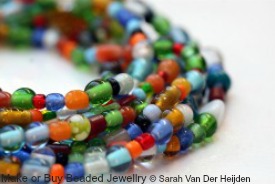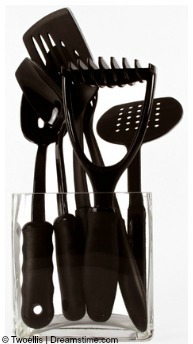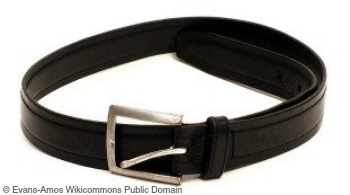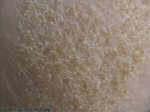Uses of Nickel Are Varied.
Know the Items It Is In
Then Reduce Contact
There are many uses of nickel. Nickel is found in many everyday items. Some obvious, some not so much.
I have complied a list of things that tend to be the worse offenders.
There are also some ideas on how to avoid them.
There are also some ideas of substitutes that should not affect you if you have a nickel allergy.
It is also important to realise that nickel is not the only metal that can cause a skin reaction.
But it is the most common metal allergy.
Common Uses Of Nickel
Uses of nickel include
- Jewellery. Including rings and watches
- Items in the home. Including kitchen utensils and cutlery
- Personal Items. Including coins and keys
- Clothing. Including zips and studs
- Food. Including nuts and beans
Jewellery
One of the most common uses of nickel is in jewellery.
It is often found in cheaper jewellery and some costume jewellery. The items are normally plated with it to give it a nice finish.
It is also in white gold. Any item less than 24 carat gold contains it as well as other metals.

The less carat an item has the more of other metals are added.
So the higher carat, the less likelihood of an allergic reaction occurring.
Silver and gold plated items are best avoided too.
Nickel is used as a plate for the silver and gold to stick to.
When your ears are pierced for the first time may be when you first notice a reaction. It can also trigger a sensitivity anywhere on the body. Wearing earrings that are of a high carat could stop a rash appearing. Or putting special plastic covers on the studs may help.
You may notice a reaction
- where a necklace or bracelet is worn, sometimes caused because of the fastening clip
- on your finger where a ring has been worn
- on the skin under where a metal watch strap is worn
Look for nickel-free jewelry. It tends to be advertised as such. This shows that there is more of a demand for it now.
Also look for jewellery that is at least 12 carat gold, made of sterling silver. Or if you like something a bit retro, get yourself some plastic beads. But still check the clasp or fastener. If you are not sure just put some clear nail varnish on it. Great for stopping the nickel from affecting the skin.
Items In The Home
Uses of nickel in everyday items in the home that may cause a reaction include
- Cupboard and drawer handles. Changing the handles is an option, or you could coat in clear nail varnish. Personally, I think I would rather change the handles. That’s a lot of nail varnish, and you may need to get a bigger brush!
- Scissors. You could buy a pair with plastic handles or wear gloves when using them
- Kitchen utensils. You can use ones with plastic handles or use wooden utensils
- Cutlery. There are special handles you can buy to put over the end of a set you already own. Or you could buy wooden or plastic handled ones. If you are eating out, and you have a severe reaction, you may decide to take some of your own cutlery
- Toasters and Kettles
- Plug and chain. You can buy a rubber plug and a nickel free chain

Stainless steel is not nickel-free.
It does however keep its nickel content well.
Though if you are cooking with anything stainless steel it may release it into any acidic food being cooked, including tomatoes.
So if you are very sensitive to nickel, it may be an idea to avoid stainless steel.
There are places that sell nickel-free household items.
A search on the internet will bring up some companies that sell them.
They may be a little more expensive, but if your allergy is severe it is probably worth it.
Personal Items
These are things we tend to use everyday. Things that we may not even think will be a problem and cause a reaction.
Uses of nickel in personal items include
- Keys. You can put a plastic cover on the main part that you handle. Keys made of aluminium are also available
- Coins. Many European and American coins may be a problem. If you keep your coins in your pocket a rash may appear, even through the material. If you work with money you could wear gloves
- Cigarette lighter. Instead of using a metal one, you could use a plastic disposable one
- Pens. If they have a metal casing they may contain nickel. Use plastic cased biros. If you need a nicer looking pen, you can buy a nickel-free one
- Batteries. Some batteries contain nickel cadmium. Usually rechargeable ones. You could use other types, but the rechargeable ones are more cost effective. So use gloves when handling.
This is not an extensive list of personal items that may cause a reaction. Be aware if you are very sensitive that there are things that you wouldn't even think contain nickel.
Clothing
Other popular uses of nickel is in clothing. It is not the actual item of clothing that is the problem. It tends to be a part of the clothing or accessory.
- Zips
- Buttons and studs. Especially common with jeans studs. The rash will appear where the stud has been in contact with the skin
- Belt buckle. The skin around the waist area will be affected. You can buy a belt with a plastic buckle or nickel free belts
- Glass frames. Most metal frames contain nickel. Check the frame fits properly. As where they sit, on the bridge of the nose and ears are made of plastic. Plastic frames can also be brought.
- Bra hooks and the under-wire. A tell tale rash will appear on your back where the bra strap lies. Use fasteners made of plastic or another metal. The under-wire can cause problems when we sweat and will also rub more when the material of the bra is thinning. The best thing would be to try a bra without wire. They are normally called a soft cup bra.

You can apply a layer of clear nail varnish to studs and to your belt buckle.
For some reason it stops the metal affecting your skin. Be sure to reapply it regularly, as it wears off, and a reaction will reoccur.
Food
Uses of nickel does not include food. Some foods actually contain nickel. A reaction to them is normally rare. Except in people who are very sensitive to it.
There are conflicting reports on foods that have a high or a low content.
The main foods with a high content are
- Nuts. Including hazelnuts and walnuts
- Beans. Including red kidney beans
- Peas
- Fish. Including herrings
- And unfortunately chocolate and cocoa

Canned and tinned foods also can be a problem. So use fresh products where possible, especially fruit and vegetables. Fresh food has a lower level than the canned equivalents.
This is not an extensive list of items containing nickel. These are the more common things. It is important to remember that not everyone's sensitivity is the same.
You might be affected by the long time contact on the skin of a belt buckle. Or you might be affected by short time contact while cooking with a metal utensil.
You can decide how much effort you are going to take with removing offending items or substituting them. If your sensitivity is mild then it makes your job of preventing a reaction alot easier.
After reading the uses of nickel you can read more on Nickel Allergy, its symptoms and treatment
Return from Uses of Nickel to Triggers of Eczema
Return from Uses of Nickel to What is Eczema
Search What Is Eczema?
Advertising on What Is Eczema?
We are a participant in the Amazon Services LLC Associates Program, an affiliate program which allows sites to earn fees by advertising and linking to amazon.com. If you make a purchase through a link on this page, I may receive a small commission, at no extra cost to you. Many thanks
